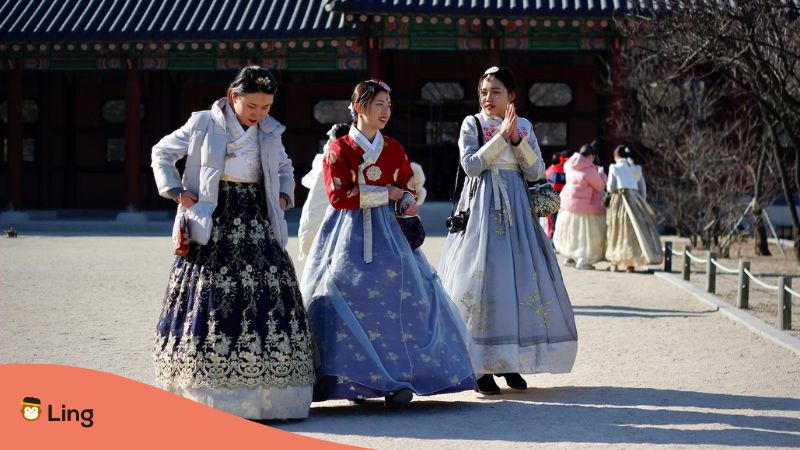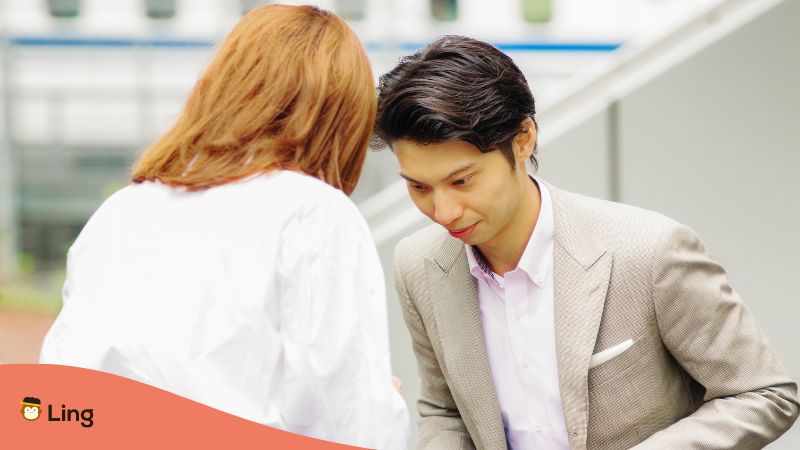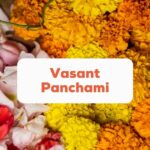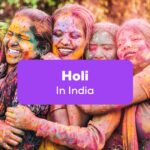Ever heard the phrase “to know a country, learn its language”? Well, there’s a grain of truth to that, especially when it comes to South Korea.
If you’re a language learner or simply curious about the rich tapestry of South Korea traditions and rituals, then you’re at the right place.
South Korean culture, deeply rooted in the political and social philosophy of Confucianism, Buddhism, and Shamanism, is an intricate web of customs and practices that reflect the nation’s history and values.
So, why South Korea? Well, picture this. You’re entering a world where age-old traditions blend seamlessly with modern life.
It’s where the ‘Hanbok’ – the vibrant traditional Korean dress, is as much a part of festivals as Korean pop music is of global entertainment.
It’s a country where the warmth of ‘Jeong’ (a deep emotional bond in Korean society) is as comforting as a bowl of ‘Tteokguk’ on Seollal, the Lunar New Year.
And let’s not forget you’re navigating this culture through the lens of the Korean language.
It’s where each phrase, and each nuance, brings you closer to understanding the heart and soul of the Korean Peninsula.
The Significance Of Major Holidays
Picture yourself in the heart of South Korea during one of its major holidays. It’s more than just a break from routine.
These occasions are a vibrant showcase of the nation’s deep-rooted cultural heritage, where everyone participates in a grand cultural performance.
From the Lunar New Year to Korean Thanksgiving, each holiday tells a unique tale about the Korean people and their values.
Seollal – The Lunar New Year
Seollal (설날), or the Lunar New Year, is more than just the dawn of a new lunar calendar. It’s a time of familial unity, respect for ancestors, and the savoring of traditional cuisine.
Charye – The Rite of Ancestral Remembrance
Have you ever come across ‘Charye’ (차례)? This ancestral rite, held on the morning of Seollal, sees families give thanks to their ancestors with an elaborate feast.
It’s an act of remembrance, a practice that reminds us of our roots and the continuity of family lineage.
Tteokguk – The Age-Adding Soup
And then there’s ‘Tteokguk’ (떡국), a traditional soup made with sliced rice cakes. This is not just any soup. It’s a symbol of growth and well-being.
In Korea, a person officially ages a year, not on their birthday, but on Seollal after partaking in a bowl of Tteokguk.
This soup signifies a fresh, healthy start to the New Year. A unique twist to a birthday tradition, wouldn’t you agree?
Chuseok – The Korean Thanksgiving
Now let’s turn to Chuseok (추석), also known as Korean Thanksgiving.
It’s a period of giving thanks for a prosperous harvest and has a unique set of traditions that are quintessentially Korean.
Honoring Ancestors During Chuseok
Similar to Seollal, families gather during Chuseok to pay respects to their ancestors.
They visit their ancestral hometowns and tend to the graves of their forebears in practice known as ‘Charye’ (차례).
This tradition is a way of remembering and honoring the past while also strengthening familial ties.
Songpyeon – A Sweet Thanksgiving Delight
Of course, no discussion about Chuseok would be complete without mentioning ‘Songpyeon’ (송편).
It’s a type of rice cake filled with sweet or semi-sweet fillings.
These homemade delicacies symbolize more than just a festive treat.
They represent family unity, sharing, and a tradition deeply embedded in Korean culture.
Each bite of Songpyeon is a taste of history, of a rich cultural practice that has spanned generations. Sounds delightful, doesn’t it?

Rituals Signifying Life’s Milestones
South Korean culture recognizes the significant milestones in life with unique rituals and traditions, each resonating with rich cultural symbolism.
Let’s discuss these unique customs marking early life, the first haircut, and the transition into adulthood.
Baek-Il And Doljanchi – Marking The Start Of Life
South Korea celebrates a child’s early life with Baek-il (백일) and Doljanchi (돌잔치).
Baek-il is a celebration marking a baby’s first 100 days, a milestone of survival and health in the past when infant mortality was high.
Families express gratitude by praying to the spirits and sharing rice cakes with their neighbors.
Doljanchi, the first birthday celebration, is a grand affair where the child, dressed in a Hanbok, is presented with various objects.
Each object symbolizes a different future path, adding an element of fun and anticipation to this significant event.
Gwallyeok-Sik Or Gosa – The First Haircut Ritual
The first haircut, known as Gwallyeok-sik (관례식) or Gosa (고사), is a significant rite of passage in South Korea.
It symbolizes the child’s growth and continued health.
The ceremony is often celebrated with close family and friends.
The child’s hair is usually kept as a keepsake, marking this important milestone.
Coming-Of-Age Day – Embracing Adulthood
Coming-of-Age Day (성년의 날) celebrates young adults who have turned 20 in the previous year, recognizing their transition into adulthood.
Dressing up in traditional Korean attire, they receive gifts from their parents, including flowers, perfume, and a wish for good luck.
This heartfelt celebration acknowledges the journey into adulthood and the new responsibilities it brings.
Wedding And Funeral Traditions
South Korea’s wedding and funeral traditions encapsulate the spectrum of human emotions.
These ceremonies, rich in cultural significance, create personal and communal experiences.
Pyebaek – Merging Two Families
In South Korea, a traditional wedding ceremony, or Pyebaek (폐백), symbolizes more than the union of two individuals.
It signifies the merging of two families.
During Pyebaek, the bride pays respect to the groom’s family, an affirmation of her joining a new family.
The exchange of jujubes and chestnuts further symbolizes shared hopes for a prosperous future.
Jesa – A Respectful Farewell
Jesa (제사), the funeral ritual, is a ceremony of respect for the deceased.
This carefully conducted ritual involves preparing a ceremonial table with foods placed in a specific order.
The family performs rituals accompanied by traditional Korean music and bows to bid farewell and guide the loved one’s spirit to the afterlife.
It’s a testament to South Koreans’ profound respect for life and the afterlife.

Daily Life Traditions And Customs
Stepping into everyday life in South Korea, one is immediately surrounded by age-old customs.
Intertwined with the daily grind, these traditions provide a fascinating insight into the Korean way of life.
Bowing – A Gesture Of Respect
In South Korea, a simple bow, or ‘insa’ (인사), speaks volumes.
This seemingly basic gesture takes on a deeper meaning as it’s a tangible display of respect.
The depth of the bow even signifies the level of respect shown – no words are needed.
Hanbok – A Celebration Attire
The Hanbok (한복), a traditional dress, is an embodiment of Korean aesthetics.
Worn during festivals and ceremonies, the dress’ vibrant colors and simple lines depict Korea’s cultural beauty.
The sight of the Hanbok is indeed a visual delight.
Kimjang – The Community Bonding Experience
Lastly, we have Kimjang (김장), the communal Kimchi-making event.
Far from being just a Korean art of culinary practice, Kimjang is a social tradition.
It brings together families, friends, and neighbors, promoting cooperation and sharing.
It truly exemplifies the Korean spirit of community.
The Connection Between Language And Culture
Have you ever thought about how language shapes culture?
In South and North Korea, the Korean language is more than just words – it’s a reflection of their cultural identity. Let’s take a closer look.
The Role Of The Korean Language In Traditions And Rituals
Picture the scene: a Pyebaek ceremony or a Jesa ritual.
The Korean language is at the heart of these customs, carrying the weight of history and cultural identity.
It’s more than just words – it’s a living link to the past, a way of preserving traditions for future generations. Neat, right?
Importance Of Language Nuances In Understanding The Culture
Consider ‘insa’ (인사) and ‘Kimjang’ (김장).
These Korean terms convey more than their English equivalents, ‘bow’ and ‘Kimchi-making,’ can capture.
They embody respect, community, and shared experiences, all unique aspects of Korean culture.
Learning the nuances of the Korean language is like unlocking a treasure chest of cultural insights, making the journey of learning Korean even more fascinating.
Vocabulary Related To South Korean Traditions And Rituals
To fully appreciate the tapestry of South Korea traditions and rituals, you must understand the language that wraps around these practices.
So, here’s a set of basic Korean words encapsulating these customs’ spirit.
With these words, you’re one step closer to understanding the intricacies of South Korean traditions and rituals.
Each term adds another layer to your appreciation of this rich cultural landscape.
So, why not start using them in your conversations today? Be one of the 79 million around the globe speaking Korean.
After all, language is the doorway to understanding culture, right?
Explore South Korea Traditions And Rituals With Ling!
South Korea traditions and rituals beautifully illustrate a nation deeply rooted in its cultural heritage.
They aren’t mere customs but a unique language of communal identity that binds every Korean soul.
Imagine immersing yourself in this cultural mosaic, understanding the language, and unraveling the beauty of Korean traditions with the Ling app.
The Ling app isn’t just a regular language learning tool.
It’s a cultural compass leading you into the subtleties of Korean and over 60 other languages.
Alongside language learning, it introduces you to the richness of various world cultures, making it a comprehensive guide for your linguistic and cultural explorations.
Ready for an adventure?
Download the Ling app from Google Play and App Store today, and embark on a journey into the world of languages!























